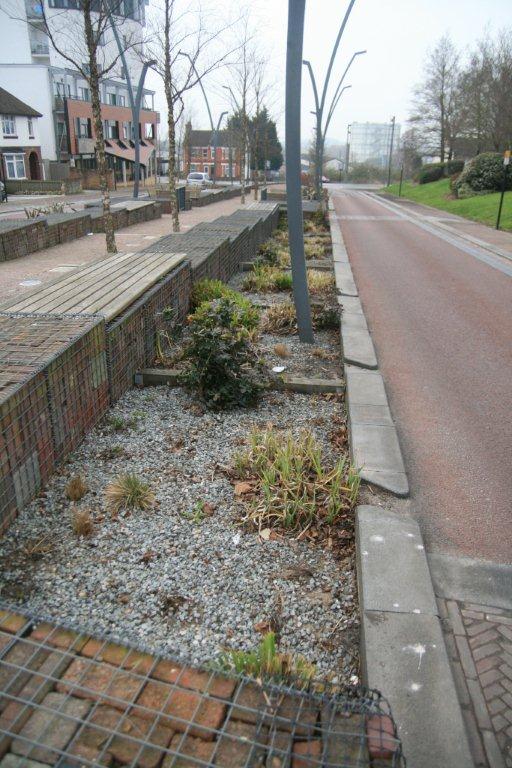- Delivering SuDS
- Using SuDS
- Background
- SuDS principles
- Benefits of SuDS
- Benefits of SuDS
- Why developers should choose SuDS
- Flood risk management
- Water quality management
- Biodiversity & ecology
- Amenity
- Air quality
- Building temperature
- Carbon reduction and sequestration
- Crime
- Economic growth
- Enabling development
- Flexible infrastructure/climate change adaptation
- Education
- Groundwater recharge
- Health and well being
- Pumping wastewater
- Rainwater harvesting
- Recreation
- Tourism
- Traffic calming
- Treating wastewater
- SuDS components
- SuDS components overview
- Source control
- Swales & conveyance channels
- Filtration
- Infiltration
- Retention & detention
- Wetlands
- Inlets, outlets and control structures
- SuDS performance & monitoring
- Delivery
- The costs & benefits of SuDS
- Adoption & maintenance of SuDS
- Legislation & regulation
- Design guidance
- Retrofitting SuDS
- Drainage exceedance
Component: Bioretention areas
Description
Bioretention areas are shallow landscaped depressions which are typically under drained and rely on engineered soils, enhanced vegetation and filtration to remove pollution and reduce runoff downstream. They are aimed at managing and treating runoff from frequent rainfall events.
Advantages & disadvantages
|
Advantages |
Disadvantages |
|
|
Where component can be used
Residential: Yes
Commercial/industrial: Yes
High density: No
Retrofit: Yes
Contaminated sites: Yes
Sites above vulnerable groundwater: Yes
Performance
Peak flow reduction: Medium
Volume reduction: Medium (High with infiltration)
Water quality treatment: Good
Amenity potential: Good
Ecology potential: Medium
Maintenance
-
Regular inspection
-
Litter/debris removal
-
Replacement of mulch layer
-
Vegetation management
-
Soil spiking and scarifying
Read more on:




